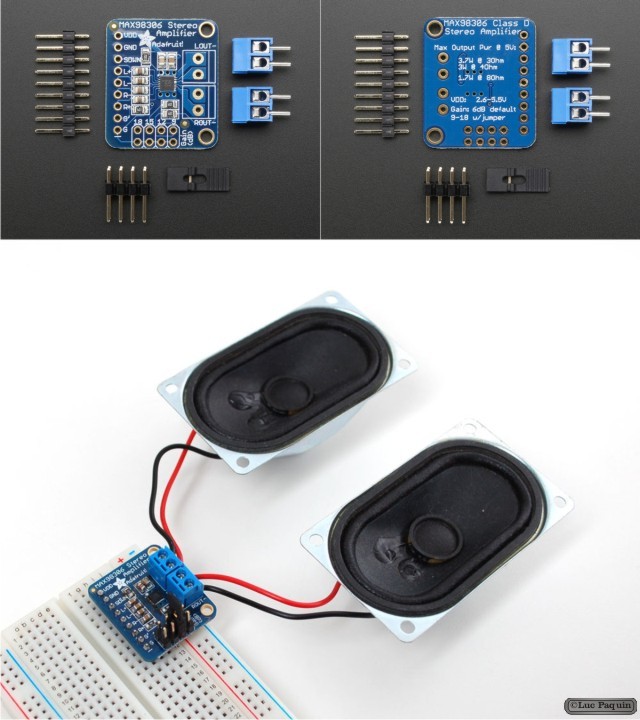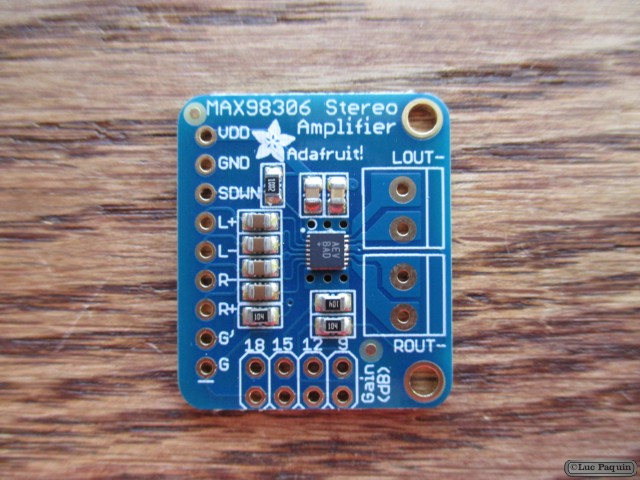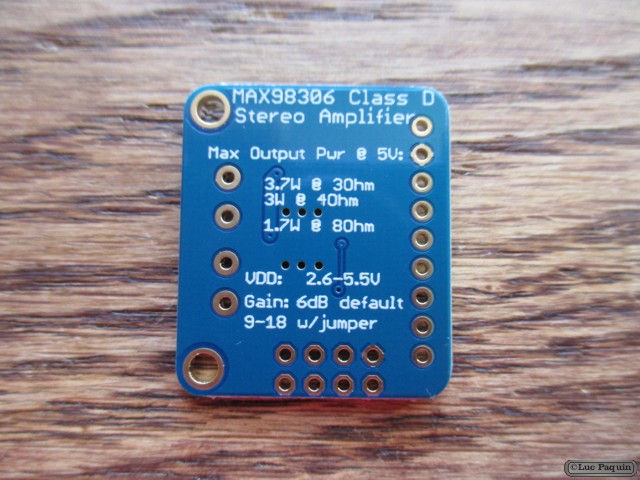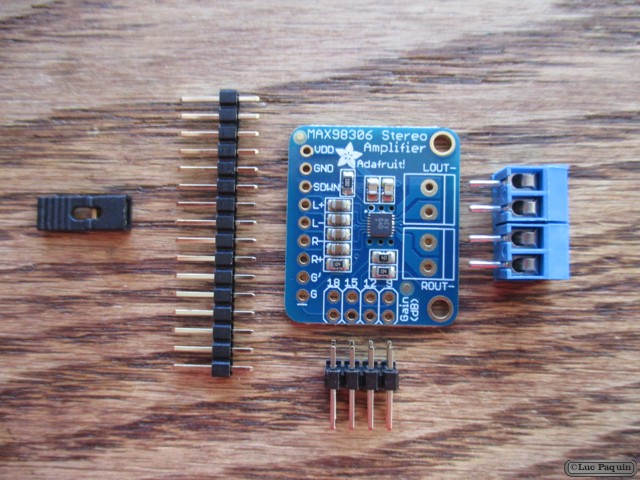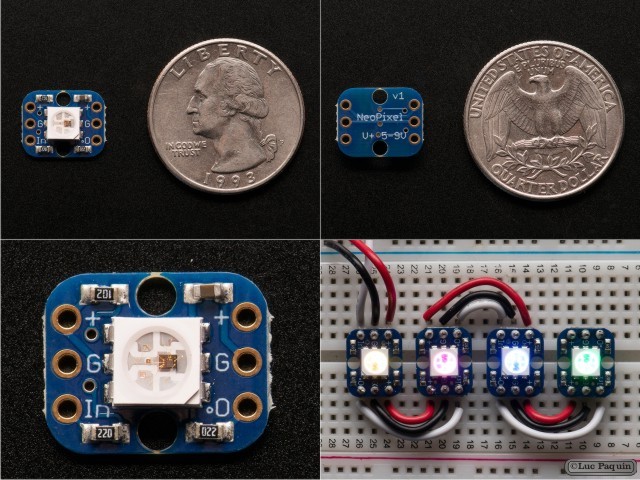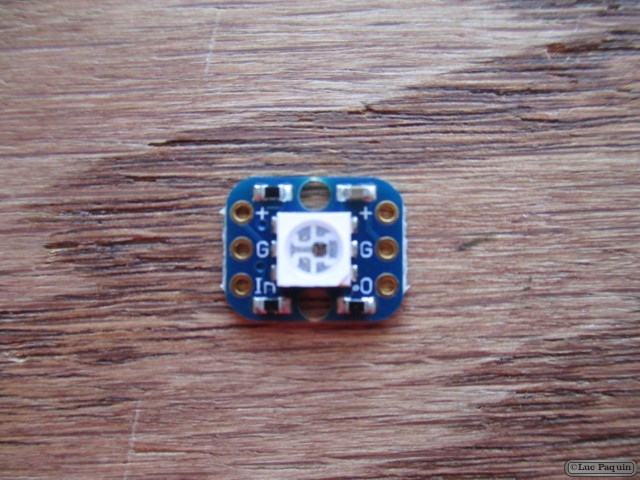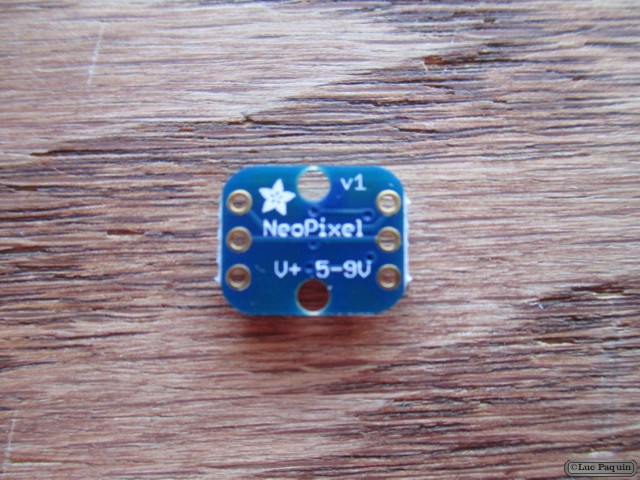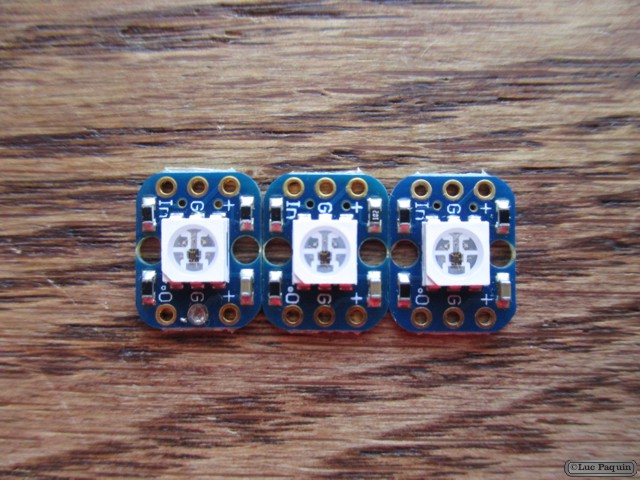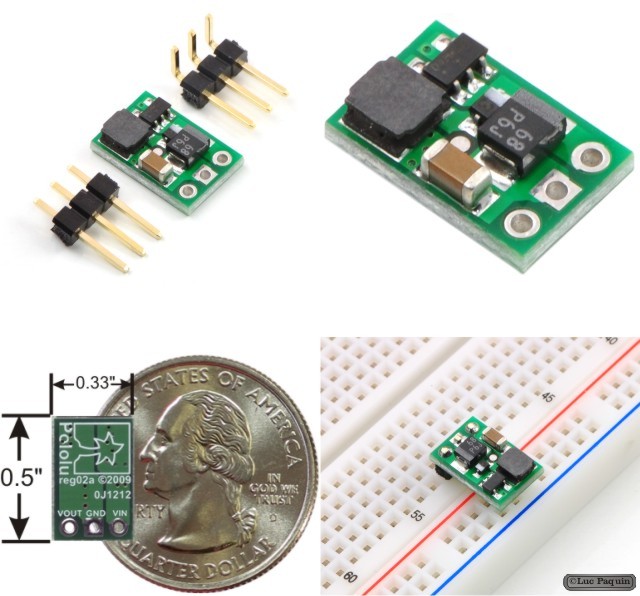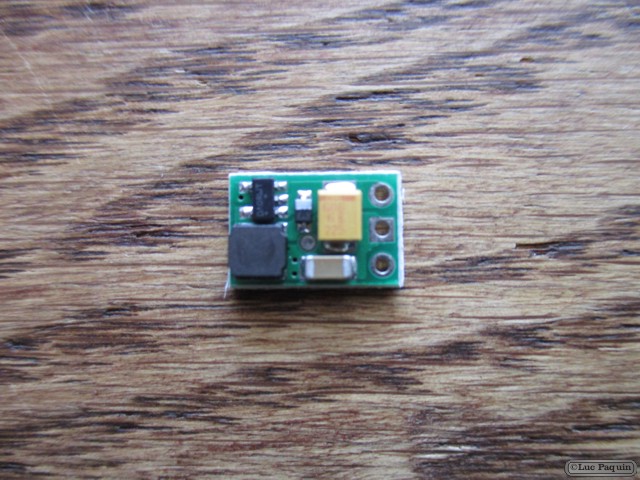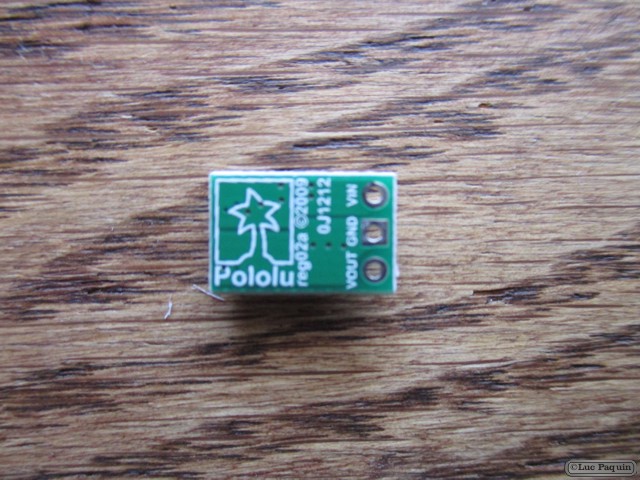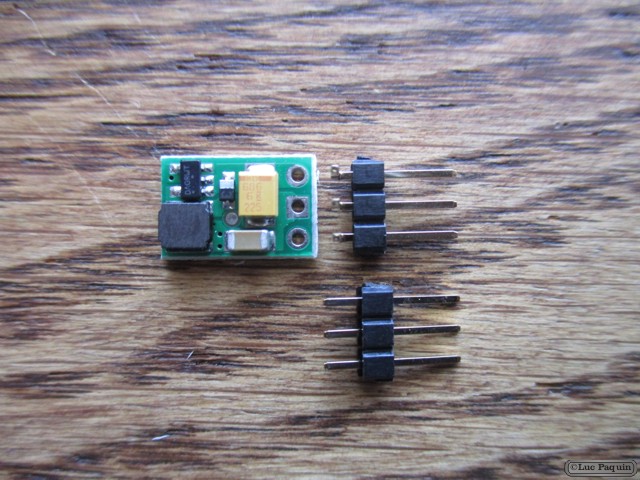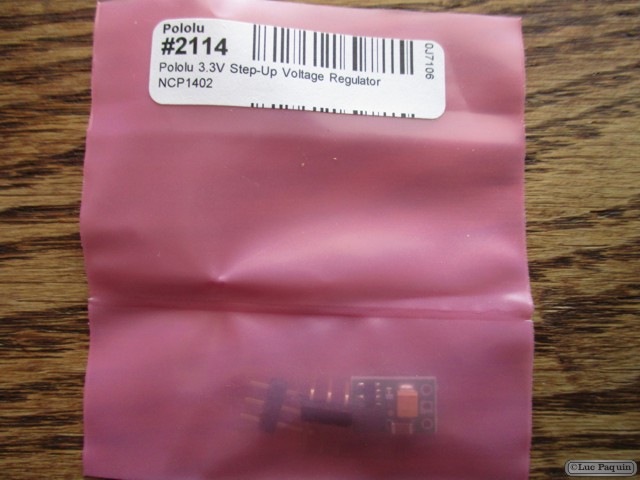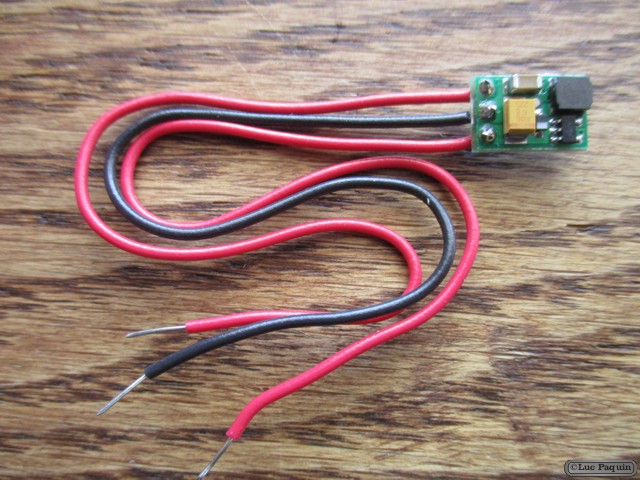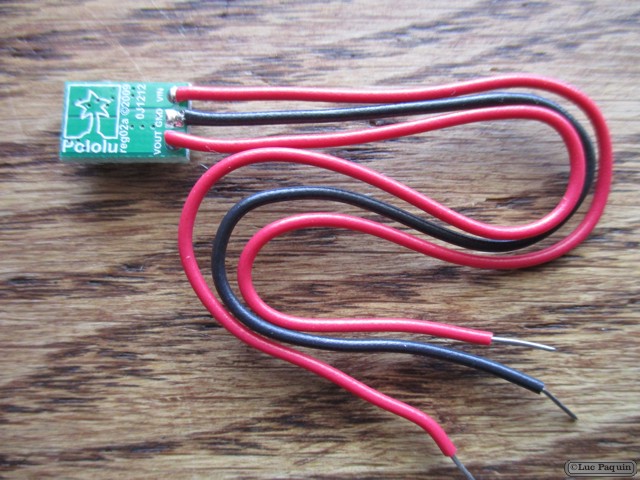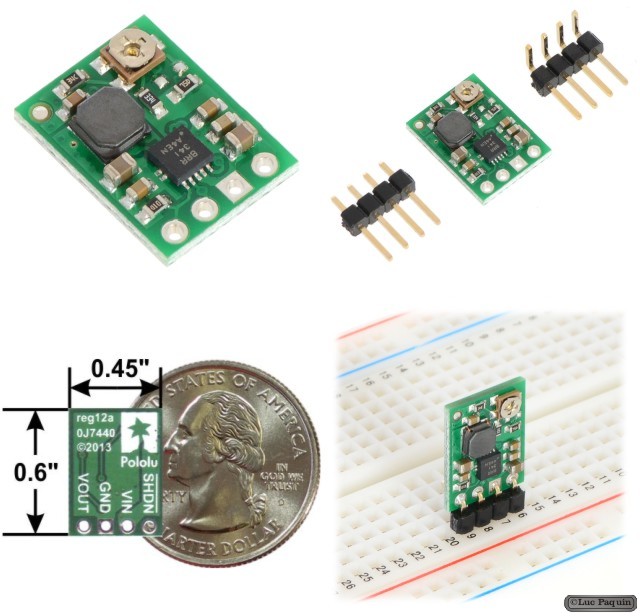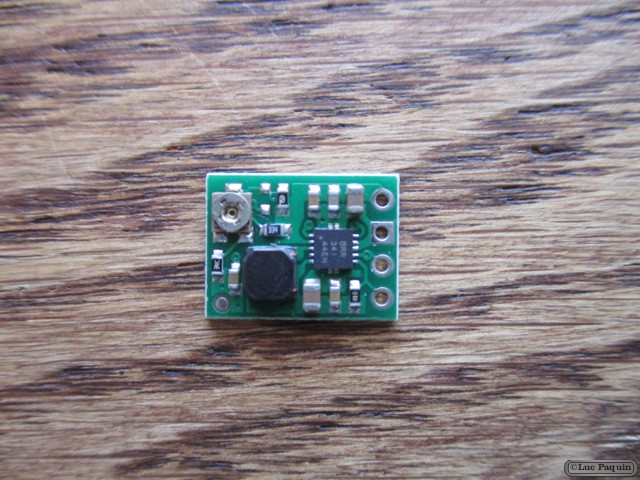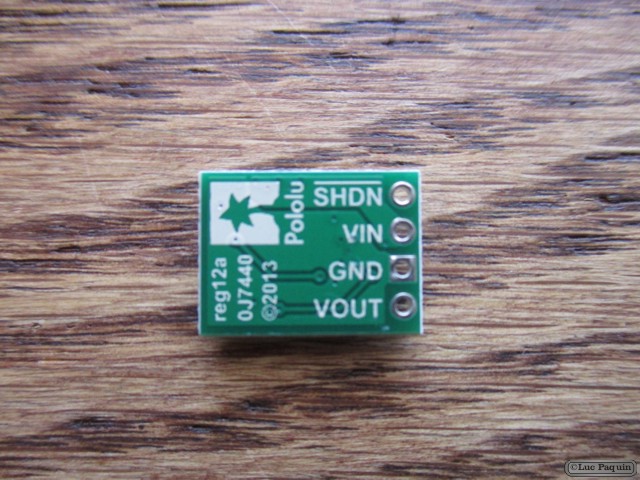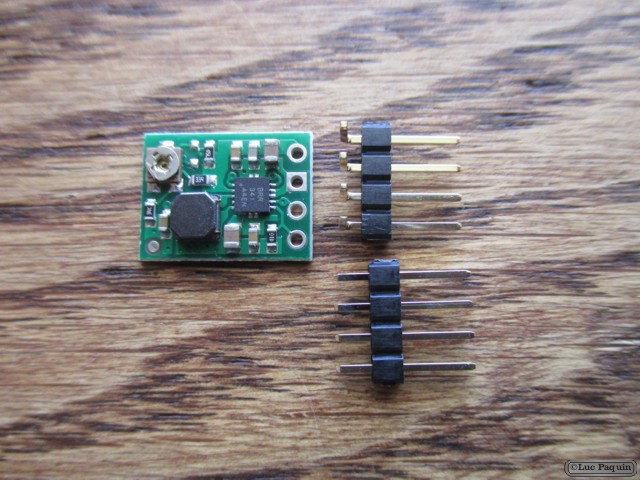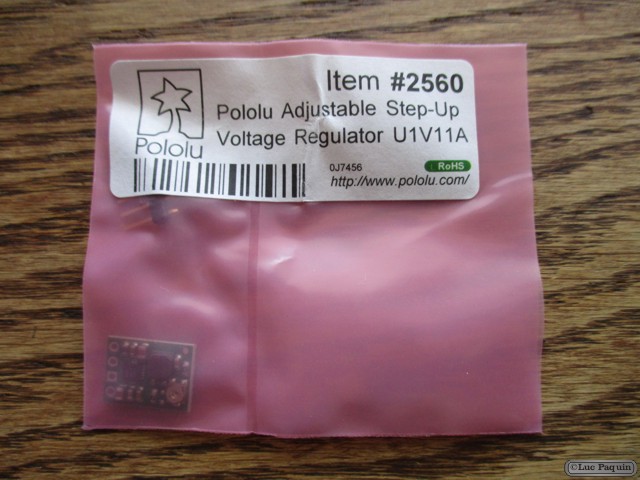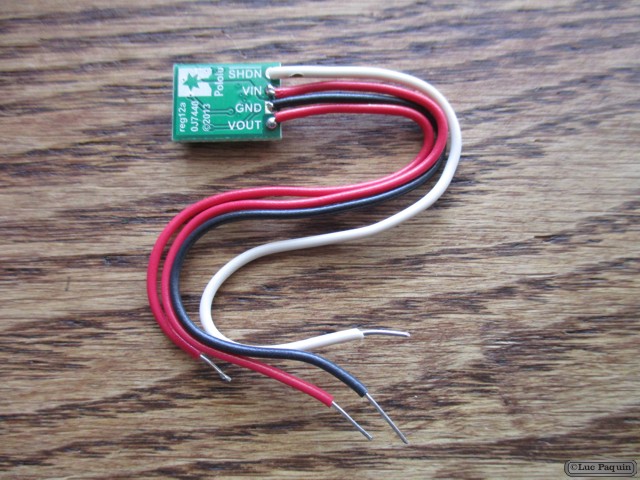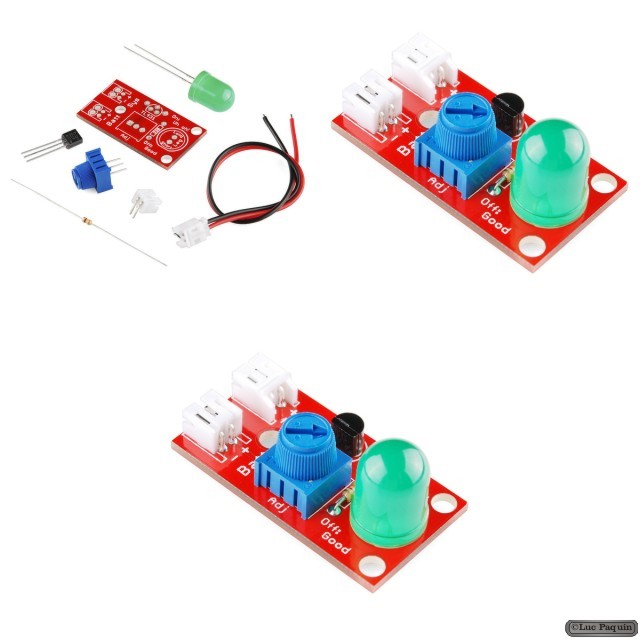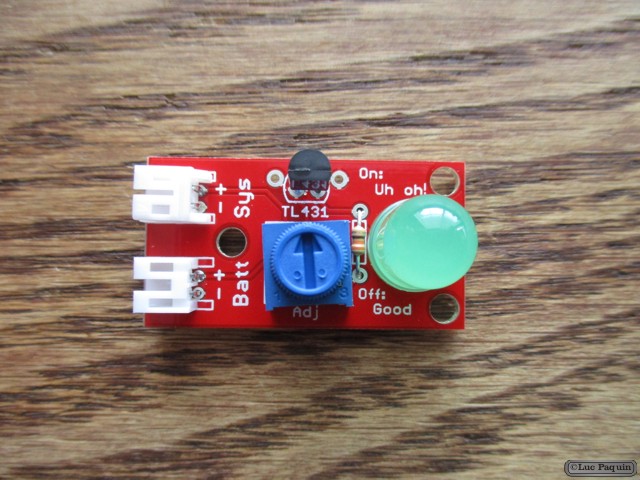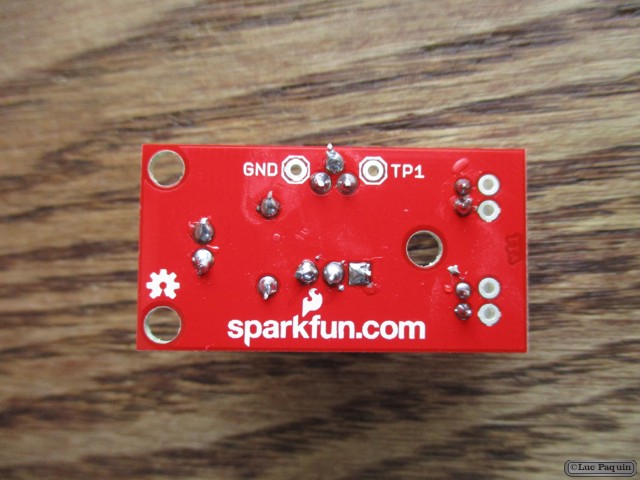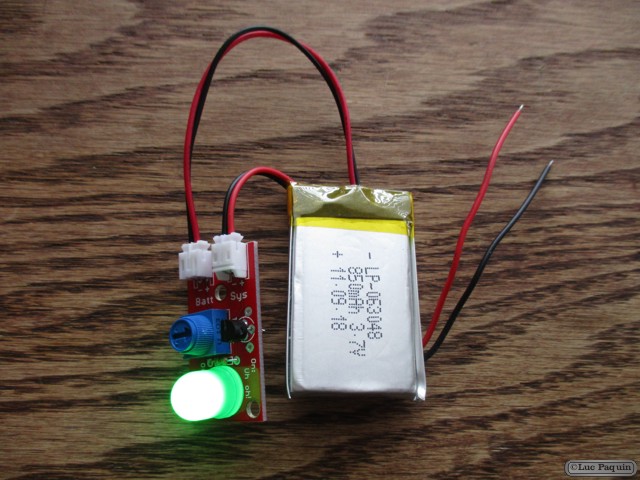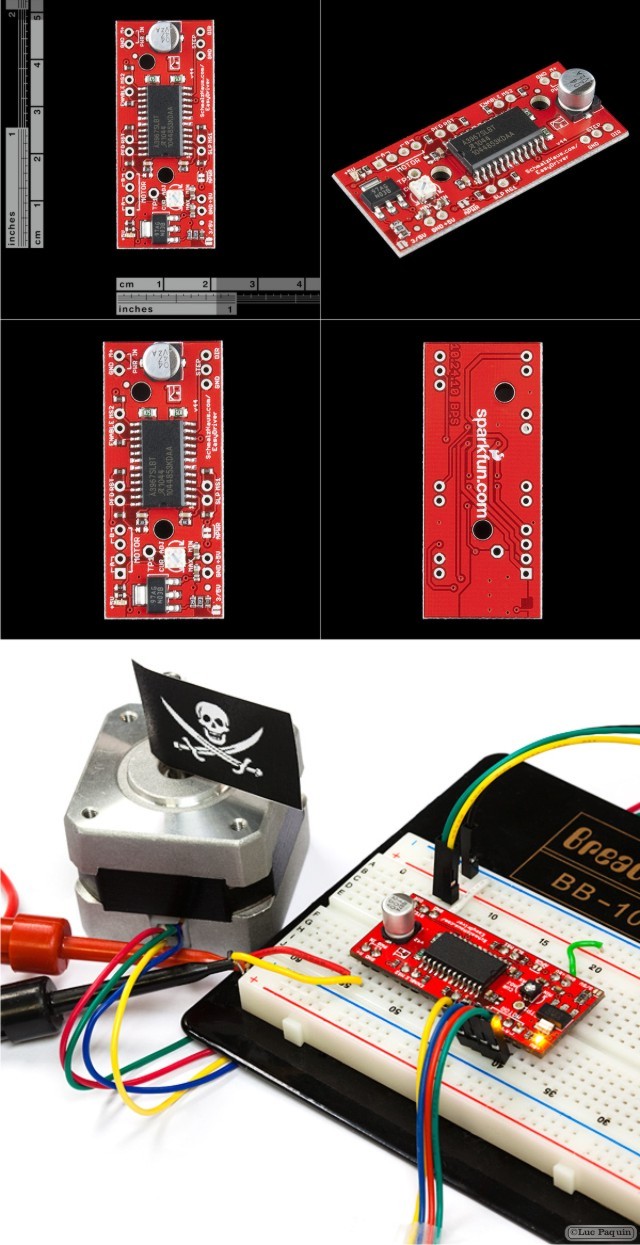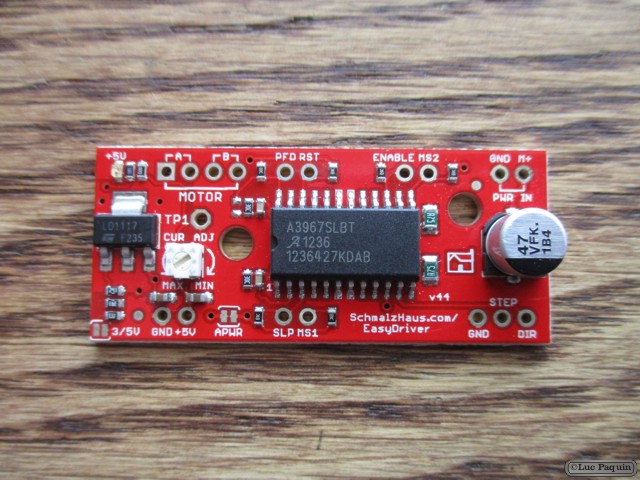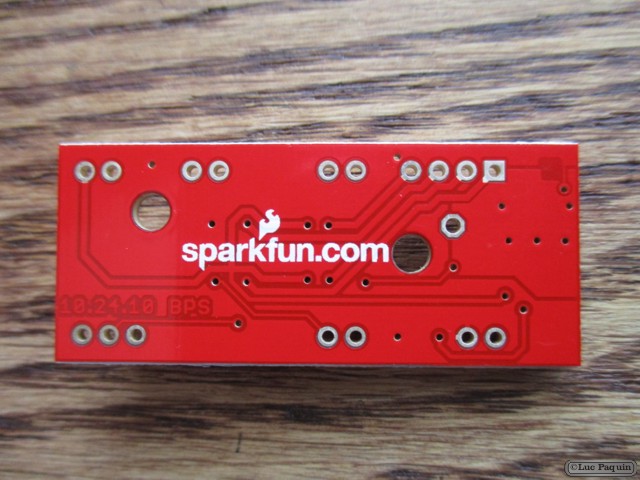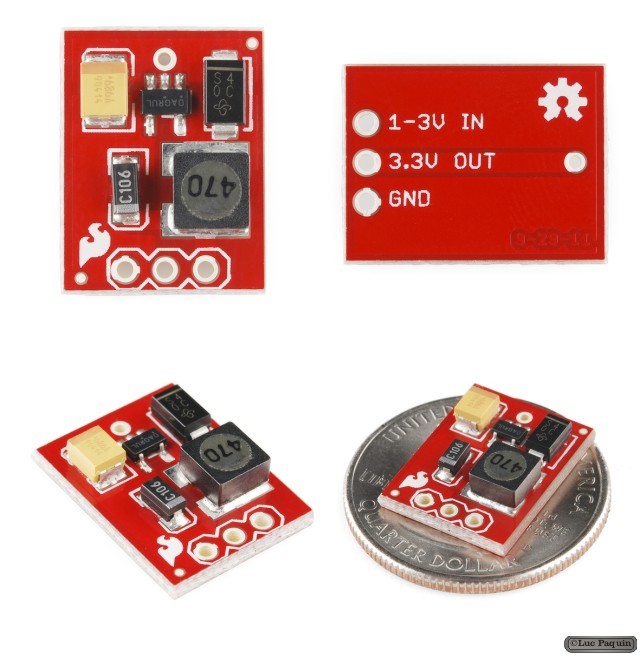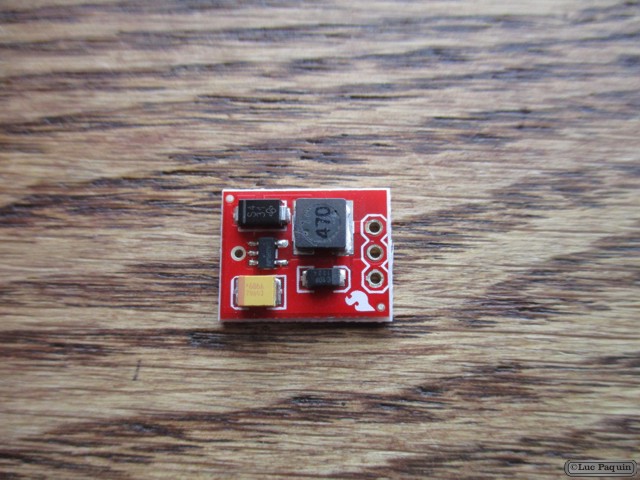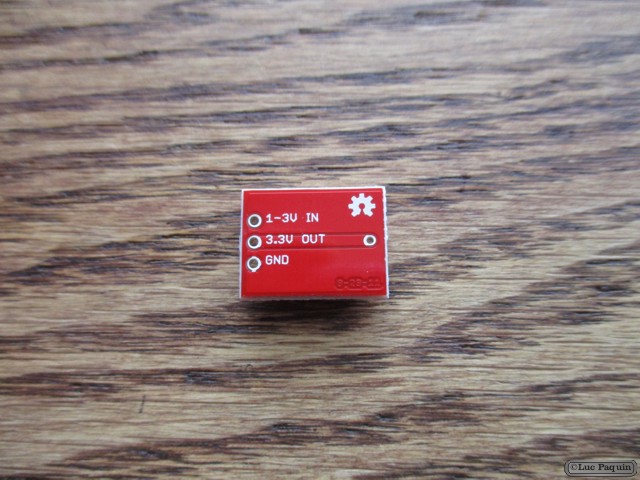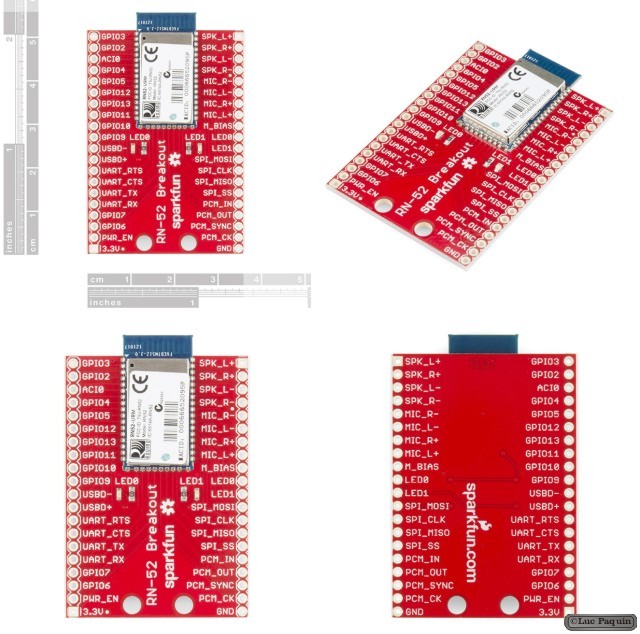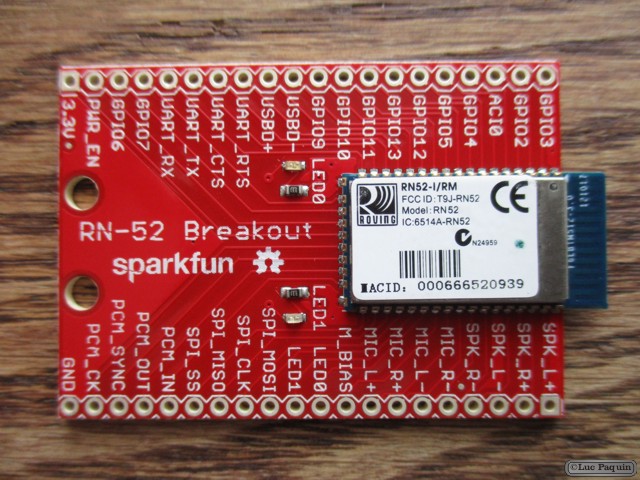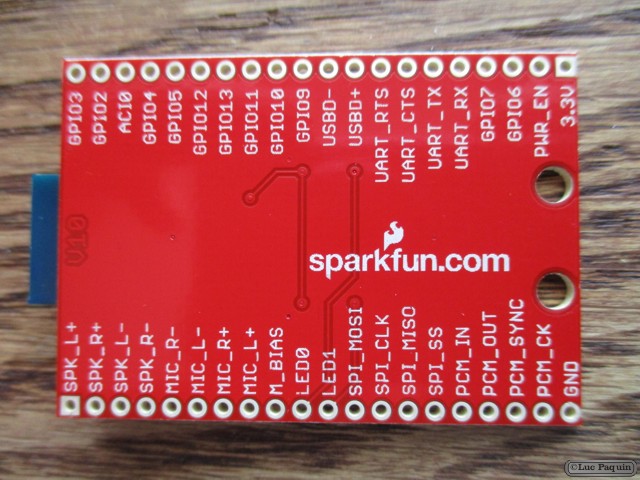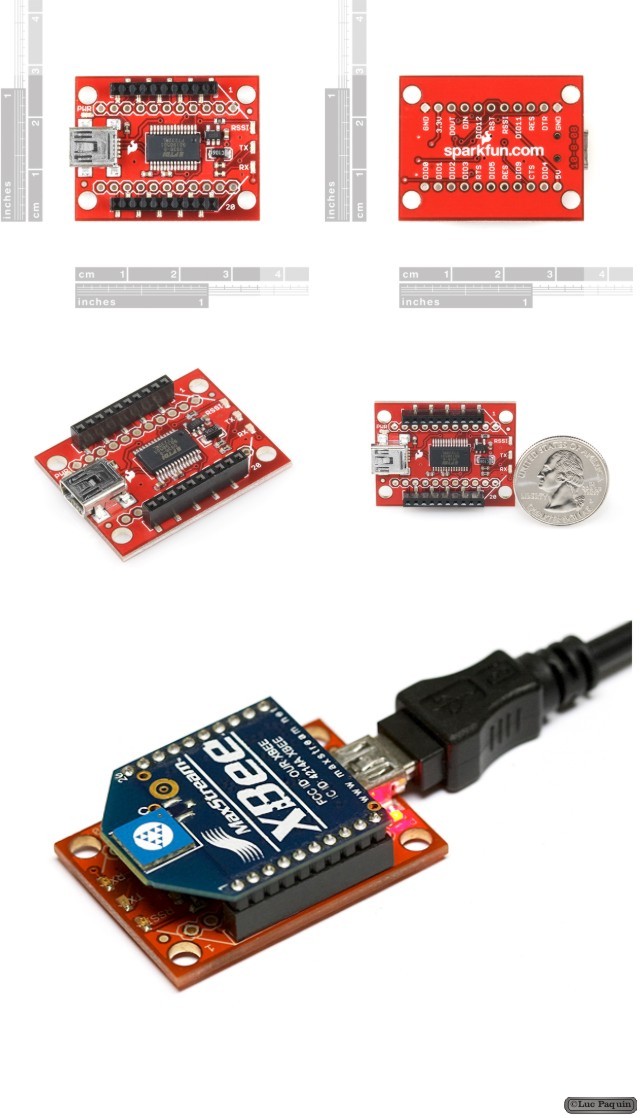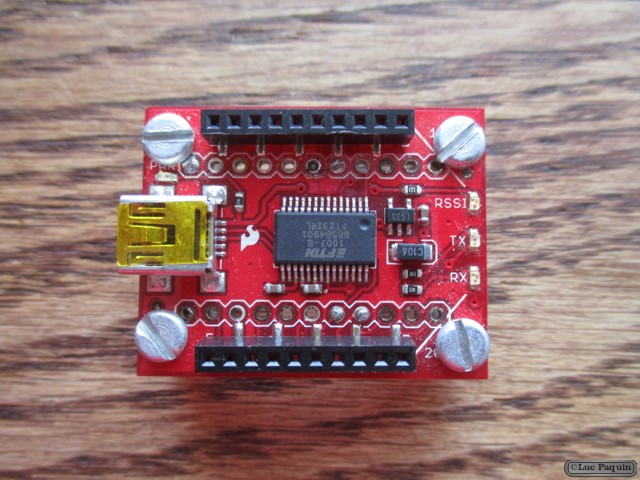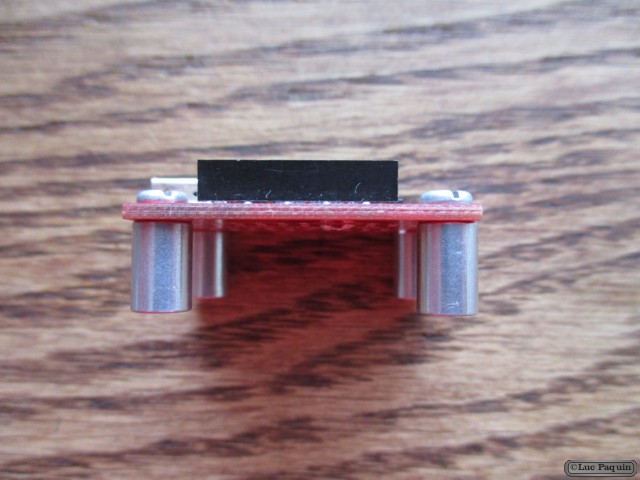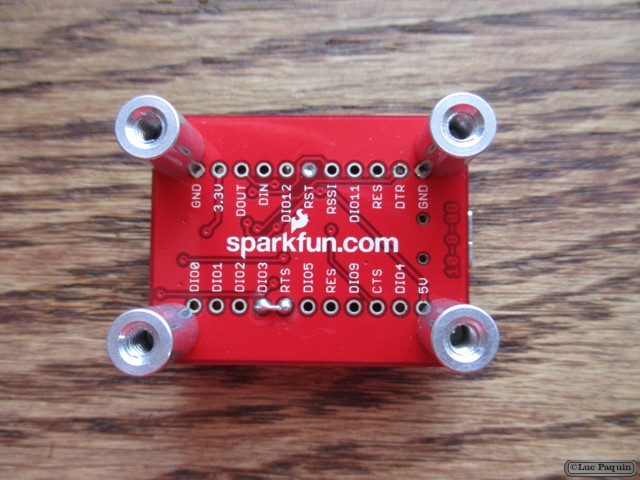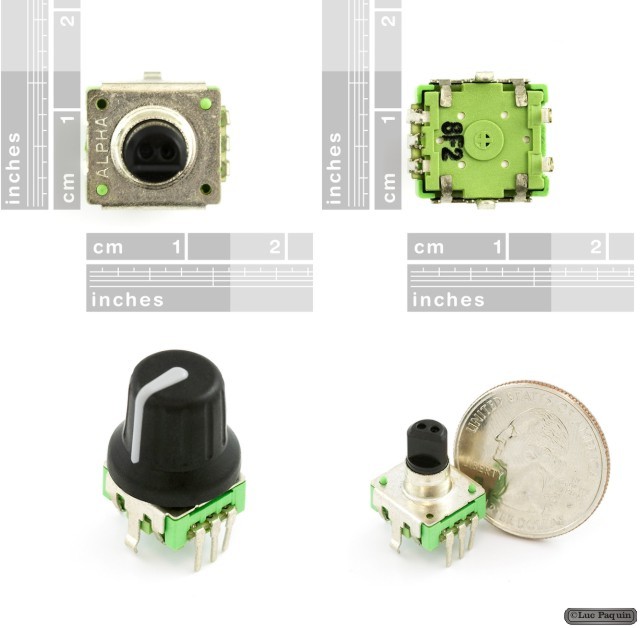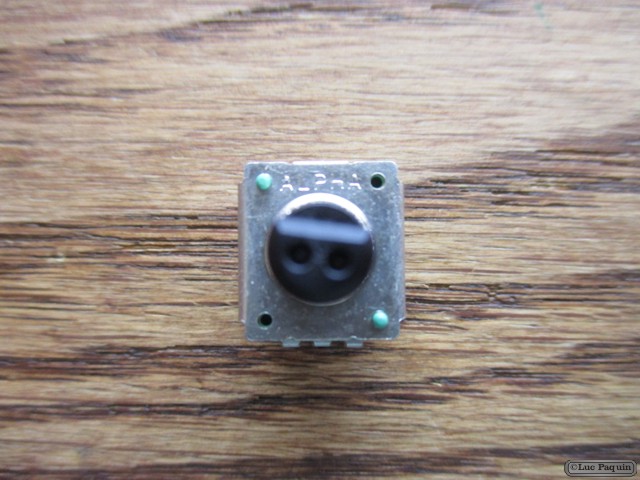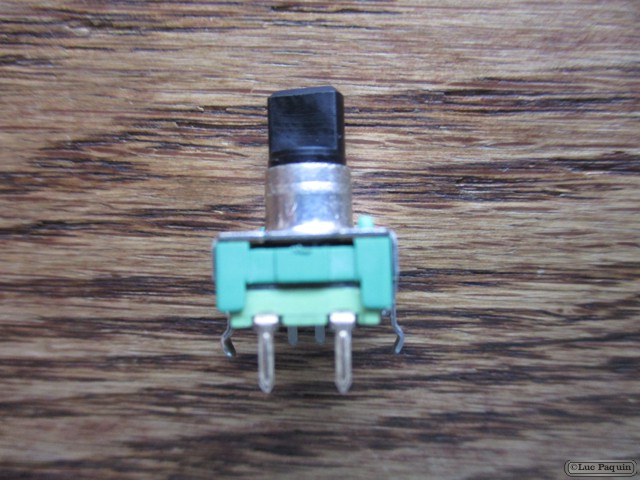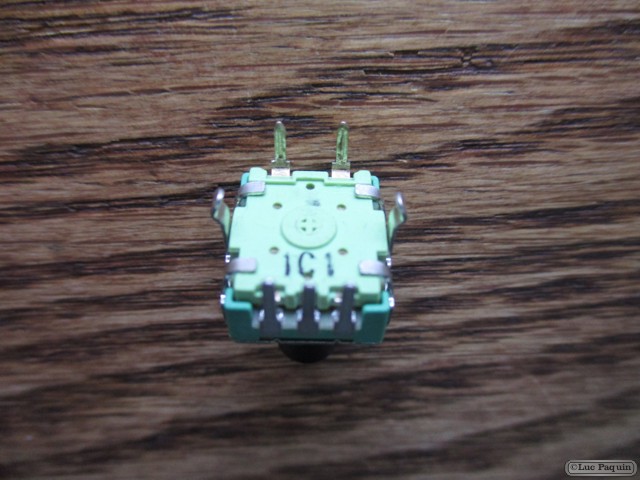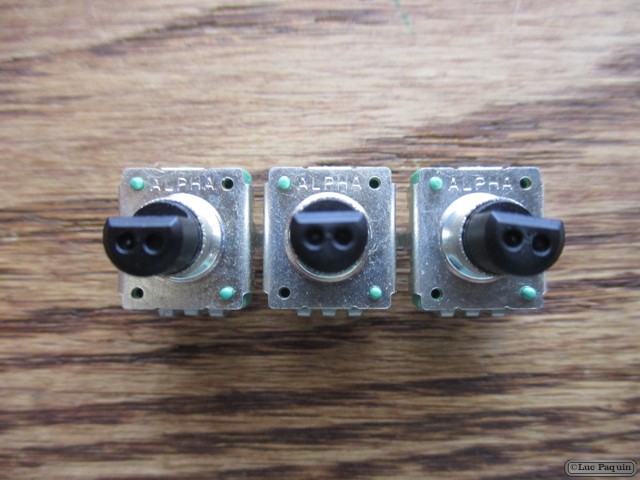DonLuc
Adafruit – Stereo 3.7W Class D Audio Amplifier – MAX98306
Adafruit: 987
Description
This incredibly small stereo amplifier is surprisingly powerful – able to deliver 2 x 3.7W channels into 3 ohm impedance speakers. Inside the miniature chip is a class D controller, able to run from 2.7V-5.5VDC. Since the amp is a class D, its incredibly efficient (over 90% efficient when driving an speaker at over a Watt) – making it perfect for portable and battery-powered projects. It has built in thermal and over-current protection but we could barely tell it got hot. This board is a welcome upgrade to basic “LM386” amps!
The inputs of the amplifier go through 1.0uF capacitors, so they are fully ‘differential’ – if you don’t have differential outputs, simply tie the R- and L- to ground. The outputs are “Bridge Tied” – that means they connect directly to the outputs, no connection to ground. The output is a 360KHz square wave PWM that is then ‘averaged out’ by the speaker coil – the high frequencies are not heard. All the above means that you can’t connect the output into another amplifier, it should drive the speakers directly.
Comes with a fully assembled and tested breakout board with 1.0uF input capacitors. We also include header to plug it into a breadboard, 3.5mm screw-terminal blocks so you can easily attach/detach your speakers, and a 2×4 header + jumper to change the amplifier gain on the fly. You will be ready to rock in 15 minutes!
- Output Power: 3.7W at 3O, 10% THD, 1.7W at 8O, 10% THD, with 5V Supply
- Passes EMI limit unfiltered with up to 12 inches (30 cm) of speaker cable
- High 83dB PSRR at 217Hz
- Spread-Spectrum Modulation and Active Emissions Limiting
- Five pin-selectable gains: 6dB, 9dB, 12dB, 15dB and 18dB. Select with a jumper or by setting the G and G’ breakout pins
- Excellent click-and-pop suppression
- Thermal and short-circuit/over-current protection
- Low current draw: 2mA quiescent and 10uA in shutdown mode
Technical Details
Dimensions (without 0.1″ header):
- Length: 28.25mm/1.11in
- Width: 24.15mm/0.95in
- Height: 3.03mm/0.12in
- Weight: 2.33g
Don Luc
Adafruit – Breadboard-Friendly RGB Smart NeoPixel
Adafruit: 1312
Description
This is the easiest way possible to add small, bright RGB pixels to your project. We took the same technology from our Flora NeoPixels and made them breadboard friendly, with two rows of 3 x 0.1″ spaced header on each side for easy soldering, chaining and breadboarding. These ultra-bright LEDs have a constant-current driver cooked right into the LED package! The pixels are chainable – so you only need 1 pin/wire to control as many LEDs as you like.
These pixels have full 24-bit color ability with PWM taken care of by the controller chip. Since the LED is so bright, you need less current/power to get the effects you want. The driver is constant current so its OK if your battery power changes or fluctuates a little.
Each pixel draws as much as 60mA (all three RGB LEDs on for full brightness white). An Arduino can drive up to 500 pixels at 30 FPS (it will run out of RAM after that). Using ribbon cable you can string these up to 6″ apart (after that, you might get power droops and data corruption)
Each order comes with 4 individually controllable pixels. In the photos above we show the pixels with headers soldered on, but the pixels do not come with any headers.
Technical Details
- Dimensions: 0.4″ x 0.5″ x 0.1″ / 10.2mm x 12.7mm x 2.5mm
- 0.5″ (12.5mm) diameter circle PCB, 0.1″ (2.5mm) total thickness
- 800 KHz speed protocol
- Chainable design
- 5-9VDC power (can run at 3.5V but color will be dimmed), constant current 18.5mA per LED (~55mA max total per pixel)
Don Luc
Pololu – 3.3V Step-Up Voltage Regulator NCP1402
Pololu: #2114
This compact step-up (or boost) regulator generates 3.3 V from voltages as low as 0.8 V and delivers up to 200 mA, making it perfect for powering small 3.3 V electronics projects from one or two NiMH, NiCd, or alkaline cells.
Overview
These tiny boost (step-up) switching regulators are based on the NCP1402 boost regulator IC. Their small dimensions of just 0.33″ × 0.5″ (8.4 mm × 12.7 mm) and a startup voltage of down to 0.8 V make it easy to build 3.3 V and 5 V circuits that are powered by lower battery voltages. The available output current and output voltage ripple depend on the input voltage, but the regulator can provide up to 200 mA if the input voltage is high enough.
With low input voltages, the output voltage ripple is under 40 mV peak-to-peak. When the input voltage is close to the output, the output ripple quickly climbs to 150 mV peak-to-peak. Therefore, adding capacitance from the output to ground is recommended for noise-sensitive applications with input voltages close to the output voltage.
Some example applications include:
- Powering 3.3 V or 5 V systems from lower-voltage batteries.
- Powering higher-voltage subsystems in lower-voltage systems (e.g. powering a 5 V sensor in a 3.3 V system).
- This regulator is available with a fixed 3.3 V or 5 V output.
For higher-power applications, consider using one of our adjustable boost regulators or our U3V12Fx boost regulators. For a regulator that supports similarly low input voltages but higher currents, consider our U1V11x boost regulators, which offer features that the rest of our boost regulators lack, such as a true shutdown and automatic linear down-regulation when the input voltage exceeds the output voltage.
Using the Boost Regulator
The boost regulator has just three connections: the input voltage, ground, and the output voltage. These three connections are labeled on the back side of the PCB and they are arranged with a 0.1″ spacing along the edge of the board for compatibility with standard solderless breadboards and perfboards and connectors that use a 0.1″ grid. You can solder wires directly to the board or solder in either the 3×1 straight male header strip or the 3×1 right-angle male header strip that are included.
Features
- Operating voltage: 0.8 V – VOUT
- 3.3 V or 5.0 V output with 2.5% accuracy
- <3 mA typical no-load quiescent current
- Small size: 8.4 mm × 12.7 mm × 3.8 mm (0.33″ × 0.50″ × 0.15″)
- Weight without header pins: 0.6 g (0.02 oz)
Don Luc
Pololu – Adjustable Step-Up Voltage Regulator U1V11A
Pololu: #2560
This compact (0.45″×0.6″) U1V11A switching step-up (or boost) voltage regulator efficiently boosts input voltages as low as 0.5 V to an adjustable output voltage between 2 V and 5.25 V. Unlike most boost regulators, the U1V11A offers a true shutdown option that turns off power to the load, and it automatically switches to a linear down-regulation mode when the input voltage exceeds the output. The pins have a 0.1″ spacing, making this board compatible with standard solderless breadboards and perfboards.
Overview
This adjustable boost (step-up) voltage regulator generates higher output voltages (between 2 V and 5.25 V) from input voltages as low as 0.5 V, and it also automatically switches to a linear down-regulation mode when the input voltage exceeds the output. This makes it great for powering electronics projects from 1 to 3 NiMH, NiCd, or alkaline cells or from a single lithium-ion cell. Additionally, unlike most boost regulators, this unit offers a true shutdown option that turns off power to the load (with typical boost regulators, the input voltage will pass directly through to the output when they are disabled).
When boosting, this module acts as a switching regulator (also called switched-mode power supplies (SMPS) or DC-to-DC converters) and has a typical efficiency between 70% to 90%. The available output current is a function of the input voltage, output voltage, and efficiency (see Typical Efficiency and Output Current section below), but the input current can typically be as high as 1.2 A. This regulator is also available with a fixed 3.3 V or fixed 5 V output, and very similar regulators are available in a much smaller size with a fixed 3.3 V or fixed 5 V output.
The regulator’s thermal shutdown engages at around 140°C and helps prevent damage from overheating, but it does not have short-circuit or reverse-voltage protection.
Features
- Input voltage: 0.5 V to 5.5 V
- Adjustable output voltage from 2 V to 5.25 V
- True shutdown option that turns off power to the load
- Automatic linear down-regulation when the input voltage is greater than the output voltage
- 1.2 A switch allows for input currents up to 1.2 A
- Good efficiency at light load: <1 mA typical no-load quiescent current, though it can exceed 1 mA for very low input voltages (<100 µA typical quiescent current with SHDN = LOW)
- Integrated over-temperature shutoff
- Small size: 0.45″ × 0.6″; × 0.1″ (11.5 × 15.3 × 2.5 mm)
Don Luc
SparkFun – “Uh-oh” Battery Level Indicator Kit
SparkFun: KIT-11087
Description: Under-powering a digital device can sometimes have pretty nasty consequences. Brown-out conditions can cause memory to get written or overwritten in odd ways, can cause unexpected behavior in connected systems and just generally screw up your day. One way to avoid this is to keep an eye on your battery voltage and turn off the system before it gets too low (or plug it in). We’ve whipped up a little board to help you out with this situation: the “Uh-oh” battery level indicator.
At the heart of the “Uh-oh” board is the TL431ACLPG shunt regulator diode. The reference voltage can be adjusted by using the trimpot on board. When the battery connected to the board reaches that voltage, the shunt allows current to flow through the LED, alerting you to a low battery situation. In order to set the appropriate reference voltage, you can use the formula found in the schematic to calculate your desired resistance and set it using the trimpot and a multimeter measuring resistance across the provided test points.
This board comes as a “bag of parts” kit. All of the parts are through-hole and it shouldn’t take long to solder together. The footprint of each part is clearly marked on the PCB to help you throw it together.
Kit Includes:
- “Uh-oh” Through-hole PCB
- 10mm Diffused Green LED
- JST Wire Assembly
- TL431ACLPG IC
- JST Right-Angle Connector
- 10K Trimpot
- 330 Ohm Resistor
Don Luc
SparkFun – EasyDriver Stepper Motor Driver
SparkFun: ROB-10267
Description: The EasyDriver is a simple to use stepper motor driver, compatible with anything that can output a digital 0 to 5V pulse (or 0 to 3.3V pulse if you solder SJ2 closed on the EasyDriver). EasyDriver requires a 7V to 20V supply to power the motor and can power any voltage of stepper motor. The EasyDriver has an on board voltage regulator for the digital interface that can be set to 5V or 3.3V. Connect a 4-wire stepper motor and a microcontroller and you’ve got precision motor control! EasyDriver drives bi-polar motors, and motors wired as bi-polar. I.e. 4,6, or 8 wire stepper motors. On this version (v4.4) we fixed the silk error on the min/max adjustment.
This is the newest version of EasyDriver V4 co-designed with Brian Schmalz. It provides much more flexibility and control over your stepper motor, when compared to older versions. The microstep select (MS1 and MS2) pins of the A3967 are broken out allowing adjustments to the microstepping resolution. The sleep and enable pins are also broken out for further control.
Note: Do not connect or disconnect a motor while the driver is energized. This will cause permanent damage to the A3967 IC.
Note: This product is a collaboration with Brian Schmalz. A portion of each sales goes back to them for product support and continued development.
Features:
- A3967 microstepping driver
- MS1 and MS2 pins broken out to change microstepping resolution to full, half, quarter and eighth steps (defaults to eighth)
- Compatible with 4, 6, and 8 wire stepper motors of any voltage
- Adjustable current control from 150mA/phase to 750mA/phase
- Power supply range from 7V to 20V. The higher the voltage, the higher the torque at high speeds
Don Luc
SparkFun – 3.3V Step-Up Breakout – NCP1402
SparkFun: PRT-10967
Description: The NCP1402 is a 3.3V DC-DC converter. The breakout board will accept voltage inputs between 1 and 3 Volts (such as 1 or 2 AA batteries) and output a constant, low ripple 3.3V output capable of sourcing up to 200 mA. This board is great for supplying power to 3.3V sensors or providing 3.3V from a a single AA battery.
The breakout board includes the necessary peripheral components. The input, output and ground pins are broken out on a 0.1″ grid to allow easy access on a breadboard.
Don Luc
SparkFun – Audio Bluetooth Breakout – RN-52
SparkFun: WRL-11777
Description: The RN-52 Bluetooth from Roving Networks is an audio module that makes it simple for you to create a hands free audio system for your car or remote control your media center. With this breakout board we’ve made it easy for you to drop it into any project you could use it for. All pertinent headers are broken out and labeled for your convenience.
The RN-52 module combines a class 2 Bluetooth radio with an embedded digital signal processor (DSP). The module is programmed and controlled with a simple ASCII command language. It provides a UART interface, several user programmable I/O pins, stereo speaker outputs, microphone inputs, and a USB port.
Features:
- Fully qualified Bluetooth module
- FCC Certified
- Fully configurable UART
- Dual-channel, differential audio input and output
- Supports iAP profile
- Low power sleep mode
- Maximum over air data rate of 3.0Mbps
- Compatible with all Bluetooth products that support SPP (almost all do)
- Embedded Bluetooth stack profiles: A2DP, AVRCP, HFP/HSP, and SPP
- 3.0 ~ 3.6V operation
- Bluetooth Technology v3.0 compatible
- Class 2 power output
Don Luc
SparkFun – XBee Explorer USB
SparkFun: WRL-08687
Description: This is a simple to use, USB to serial base unit for the XBee line. This unit works with all XBee modules including the Series 1 and Series 2.5, standard and Pro version. Plug the unit into the XBee Explorer, attach a mini USB cable, and you will have direct access to the serial and programming pins on the XBee unit.
You get the red board only. XBee modules and USB cable sold below.
Don Luc
SparkFun – Rotary Encoder
SparkFun: COM-09117
Description: This is a 12-step rotary encoder with a nice ‘clicking’ feel. It’s breadboard friendly, and has a pretty handy select switch (by pushing in on the knob). The encoder is different from a potentiometer in that an encoder has full rotation without limits. The unit outputs gray code so that you can tell how much and in which direction the encoder has been turned.
Don Luc
